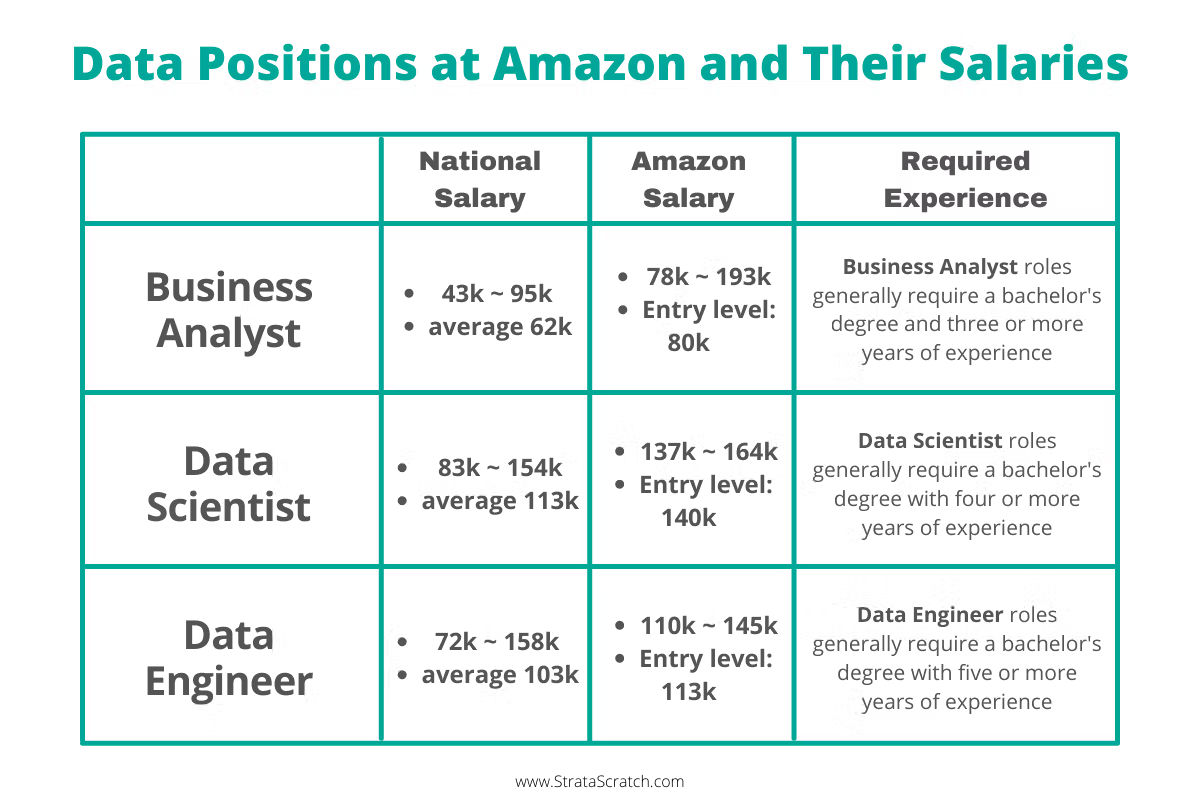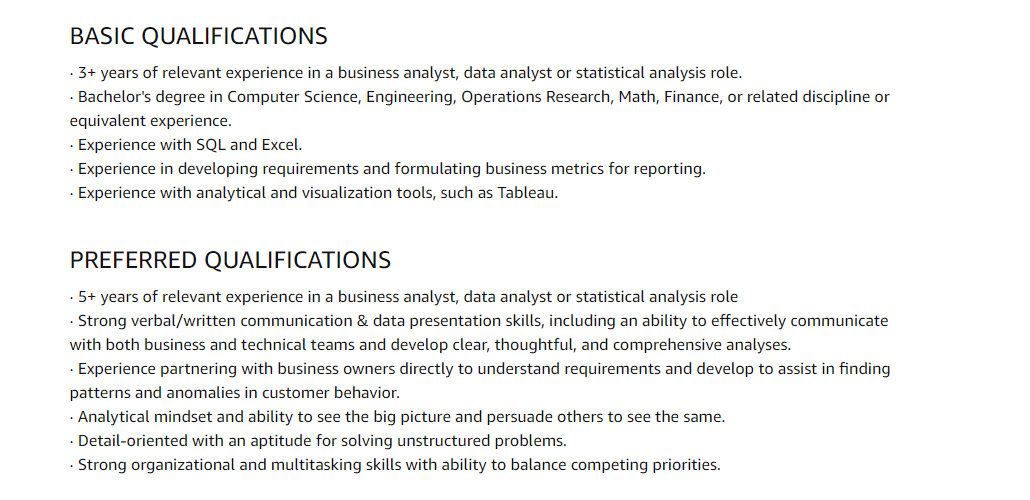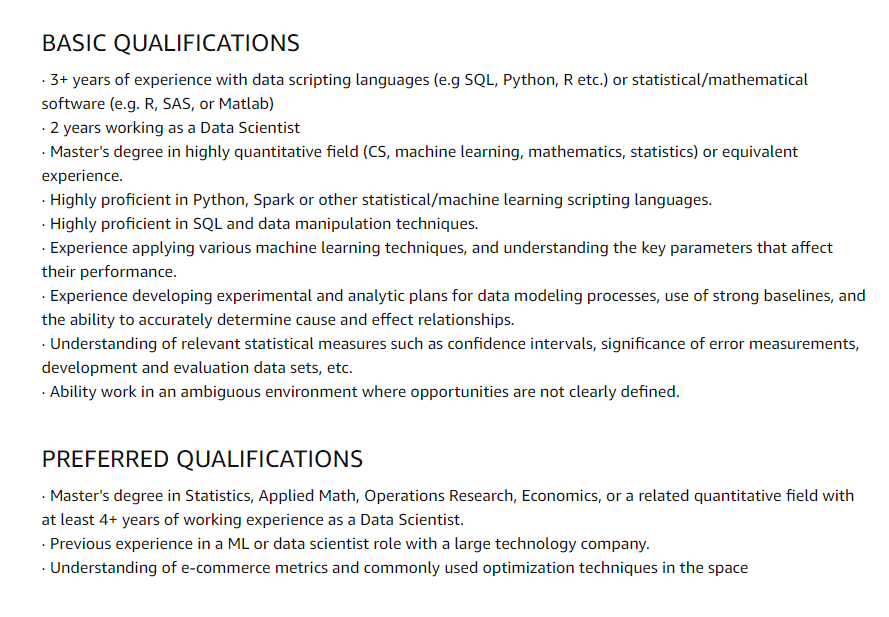Amazon Data Scientist Position Guide

 Written by:
Written by:Nathan Rosidi
Find out what it means to be a data scientist at Amazon! Their salaries, roles and required experience, types of data positions, and interview process.
Amazon.com, Inc. is the largest internet company in the world, and unique in its focus on the "customers’ desire for lower prices, better selection, and convenient services." Amazon is the world's largest online retailer, and that's in addition to its products in AI Assistant technology, streaming services, and cloud computing. Founded by Jeff Bezos in his garage in 1994, Amazon now has nearly 1.3 million employees across the world, after adding around half a million in 2020 alone.
Amazon has over 200 million subscribers on its two-day delivery services, Amazon Prime, as well as over 150 million mobile users on the Amazon app, with the Amazon Marketplace moving more than $300 billion worth of products over the course of 2020. That's not to mention Amazon owning almost half of the world's public cloud infrastructure market through its subsidiary, Amazon Web Services (AWS), through which it earned over $380 billion in net sales revenues. On top of this, all is Amazon's "customer-obsessed" business model, pushing Amazon Data Scientists to leverage its data to create the best experience for all of its users across Amazon's various platforms. Data roles at Amazon do some of the most cutting-edge research in artificial intelligence and machine learning to create forecasts and optimize algorithms for their customers.
Find out more information about working at Amazon on their Amazon Jobs page. Find current open Amazon data scientist positions here. Be sure to also check out Amazon's Career FAQs.
Amazon Data Scientist Salaries
Here's a quick overview of the types of data positions at Amazon and their respective salaries, with a comparison to the national average.

Total compensation at Amazon also includes health & dental insurance, life insurance, 401k with company match, company RSUs, and bonuses. Check out levels.fyi for a deeper dive on Amazon salaries and benefits.
Check out our article Data Scientist Salary to find out about salaries in Data Science and how they are influenced by various factors.
Let's take a look at additional qualifications for these roles.
Qualifications for Business Analyst

Qualifications for Data Scientist

Qualifications for Data Engineer

Roles and Required Experience for Amazon Data Scientist, Business Analyst, and Data Engineer Positions

Types of Data Science Positions at Amazon
Teams of Data Scientists perform a vital function at Amazon, working with Amazon's broad set of products across varying teams and levels across the organization. This includes the entire e-commerce branch of Amazon, as well as other specific product and business areas. Amazon's customer-centric business model means any data role will consistently focus on providing value for the customer. At the same time, the responsibility and focus of a data position can vary depending on the team and department you are hired for.
The types of roles include:
Business & Marketing
The e-commerce branch of Amazon is the most well-known branch of the multinational technology company with millions upon millions of both sellers and buyers. There are 1.9 million active sellers on the Amazon Marketplace, with that number growing by more than a million new users every single year. As the world's largest marketplace, Amazon has data positions working on potential problems at every aspect of the business, from minimizing buyer risk to optimizing the supply chain.
A role in Business & Marketing will:
- Analyze large amounts of data from different parts of the supply chain and their associated business functions
- Provide actionable measurement solutions and media recommendations that help advertisers understand how media drives customer action
- Optimize complex trade-offs between customer experience, inventory costs, fulfillment costs, fulfillment center capacity, and more
Data Engineering
With Amazon owning almost half of the world's public cloud infrastructure market, it's only natural that there is a strong need for data positions that focus on building, maintaining, and optimizing their data practices and processes, not to mention the data infrastructure needed for the other products under the Amazon umbrella. Working cross-functionally with a variety of other teams at Amazon, these data engineering teams play a vital role working with the absolutely enormous amount of data produced by Amazon Web Services.
A role in Data Engineering will:
- Design and deliver big data architectures for experimental and production consumption between scientists and software engineering
- Create automated alarming and dashboards to monitor data integrity
- Develop the end-to-end automation of data pipelines, making datasets readily-consumable by visualization tools and notification systems
Machine Learning
That truly outrageous amount of data Amazon has access to give it all sorts of opportunities to use data-driven insights and solutions to create value for customers from, for example, search results and video and product recommendations. Taking great strides in the realm of machine learning, these teams have an impact for millions of Amazon's users around the world.
A data role in Machine Learning will:
- Design and implement scalable and reliable approaches to support or automate decision making throughout the business
- Analyze data for trends and input validity, exploring bivariate relationships, constructing appropriate transformations, and tracking down the source and meaning of anomalies
- Develop cutting edge ML solutions and apply them to data problems at scale
Now that you know more about the roles and responsibilities of Amazon data science teams, here's a brief overview of how the interview process works.
Outlining the Interview Process of Amazon Data Scientist Position
Amazon has a fairly standard (if extensive) interview process for the data scientist position, from the initial phone call screening through the hiring manager interview, and finally the full day on-site interview.
Online Application & Phone Screening
After your online application and resume are submitted, there is an initial screening phone call with a recruiter. This is a short half-hour conversation where the recruiter goes over your resume and experiences, and then briefly explains the role, team, and team's relative position within the company.
Technical Screening
Next up for the Amazon data scientist position is the technical screen, which will go more in-depth about your data experiences and technical expertise. This will include questions about statistics, coding, algorithms, and product design, with the data science coding questions being done over a shared code editor.
Full Day On-site Interview
After passing the technical screen, there is the full day on-site interview. There will be around 5 interviews split throughout the day, with a lunch break in between. The interviews will have a mix of behavioral and technical questions.
Note: the interviews will be virtual and the interview format may vary for the duration of the pandemic.
Types of Questions Asked During a Data Science Interview at Amazon
Behavioral Questions
Interviews for the data scientist position at Amazon always include the typical questions about your background and experiences, commonly with many variations of "Tell me about a time where…"
- Where do you see yourself in 5 years?
- Describe a time when you had a difference of opinion with your colleagues.
- Tell me about a time when you had to work with incomplete data or information.
Be sure to check out Amazon's 14 Leadership Principles and be prepared to talk about them!
Product Sense & Business Cases
These questions help gauge your interest in Amazon as a company, as well as your knowledge of Amazon as a business.
- How would you measure the impact of a business initiative?
- How would you describe the value proposition of AWS to the CIO of a company?
- What would you change on the Amazon website?
Data Analysis & Coding
This portion of the interview tests your coding ability, covering technical details of the code with specific examples.
- Find the customer with the highest total order cost between a set of dates. Output their first name, total cost of their items, and the date.
- Given a table of purchases by date, calculate the month-over-month percentage change in revenue.
- What is the difference between a linked list and an array?
We recommend that you refer to these Amazon Data Scientist Interview Questions and Amazon SQL Interview Questions!
Modeling Techniques
These questions cover practical applications of your coding ability and how you approach data problems. Don't forget the natural followup to any modeling question: "How can you tell that your model is working?"
- How do you interpret the coefficient in Logistic Regression?
- If you have a customer and you know where they live, their income, their gender, and their profession, how would you define a machine learning algorithm that predicts whether they will “buy today” or “not buy today”?
- How does a neural network with one layer and one input and output compare to logistic regression?
Quick Tips
- Amazon takes its 14 Leadership Principles very seriously. Take some time to look over (and memorize!) them, and be ready to talk about experiences that showcase how you exhibit those qualities.
- Do your research about the role and interview process. (You're here already so that's a good start!)
- Explain your thought process when doing coding questions. It’s important that your interviewer knows how you approach solving problems.
- Spend some time to take stock of your skillset and assess what you need to work on, whether it be an area of SQL syntax or your interview skills.
Additional Resources
Remember to explore Amazon's Career FAQs, and check out Amazon's own page on Interviewing at Amazon. Check out our forum of Amazon's Data Science interview questions here. Be sure to research the most recent interviews and salary information for the role on Glassdoor. Levels.fyi also has up-to-date information on salaries and benefits.
Share


